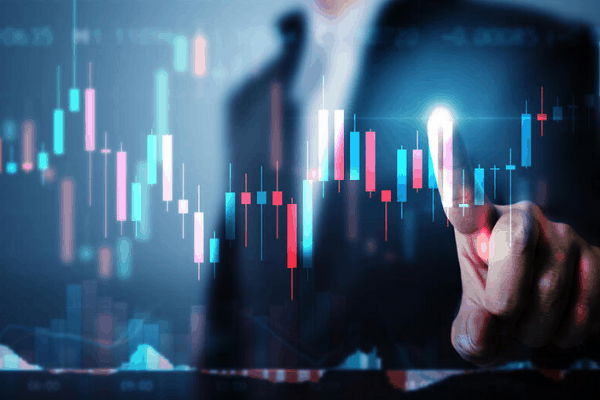What is Market Intelligence?
Market intelligence helps you assimilate information about your customers and competitors. It uncovers useful economic information that has a high likelihood of fueling business growth.The goal is to provide practical, data-based insights for you to make reliable business decisions.
It helps to answer questions like:
- What gaps are underserved?
- What features or ingredients are trending?
- Which categories are likely to experience growth?
- What are your competitors up to?
- Which product should we launch now, and which one should we launch later?
Nomad’s challenge in understanding customers and competitors is common to many of today’s executives. McKinsey reports that top CEOs set visions for what winning means in their firm’s corporate strategy. A key ingredient of this is understanding opportunities and trends in the marketplace. In other words, market intelligence. This matters even if you’re not the CEO. If you’re a brand manager, the head of strategy, the head of marketing, market intelligence helps you understand what’s going on in the universe.
The Military Intelligence Analogy
Many business processes have military roots. Logistics, for example, dates back thousands of years, and has played a key role in the outcomes of numerous wars. Next generation market intelligence is another example. In the military there are different types of intelligence. You have signal intelligence, human intelligence, other sources of intelligence. Military intelligence ties all these sources together in order to have good situational awareness. Officers can then go and decide what to do based on all those different signals of intelligence coming from sources that are difficult to parse out.
We’ve consistently added new features, rolling out updates to our advanced analytics platform. This enables brands to uncover actionable intelligence from disparate data sources, opening new possibilities that transcend legacy platforms. Before we dive into the new possibilities in next generation market intelligence, let’s have a look at how market intelligence traditionally worked.
Traditional Market Intelligence: Useful but Restricted
Think of what people were doing to gather market intelligence five or 10 years ago. You might have an analyst sit and build visualizations of sales data. You would manually research your competition by reading press releases or trade journals. You might hire a focus group of customers, or go to trade shows to conduct sleuthing operations on competitors.
In any case, you’d be looking at internal data within your own company or external data from a few sources. You might even take it to the next level, by subscribing to a business intelligence platform to build reports and visualize your internal data. Or you would hire an external analyst to give you intelligence on what’s going on outside your firm.
All of these methods are useful, but they are limited. They might be doing a lot of crunching of existing structured internal datasets to create visualizations. Or they would rely on two or three sources your external analysts speak with.
You might have used historical data that’s no longer relevant. This may or may not give what you need to plan for the future. In a time like COVID, the market intelligence that may have been gathered in January or February is irrelevant at this point, right? Historical data sources may not even reflect the present because things change quickly.
Tame Data, Limited Possibilities
The problem with all these types of data: they’re not in the open, not in the wild. They’re not going out into the universe and tapping into the new sources of data being generated every second. When you rely on these traditional methods, you’re just in your own moat, leveraging your internal information, marketing statistics, sales data, and maybe some reports from analytics vendors. You’re looking at real-time dashboards that give a situational snapshot but leave out the ‘why’ behind a trend.
Most market intelligence platforms are limited for this reason. If you Google ‘market intelligence platforms,’ most of the platforms that come up are based on internal data that companies have. At most, they might use two or three external data sources. They’re not leveraging the vast quantity of data that’s generated online.
Before we describe what next generation marketing intelligence platforms do, let’s consider the new types of data you can leverage to pull in market intelligence.
A Wild New World of Data Sources You Can Leverage
Digital transformation opens up whole new sources of external data you can use to gather market intelligence. The quantity of data generated online is enormous. Analysts estimate that there are 1.7 megabytes of data created each second for every person on the planet. This data includes all sorts of market intelligence you can leverage, such as:
- what key opinion leaders are talking about,
- what are customers saying about your brand, your product or the market at large,
- what your competitors are up to, such as patents they file or product listings.
The challenge is that most of this data is in formats that are not structured. It’s hard to mine. It’s filled with hyperbole. It uses emojis and incomplete sentences. It might be in different formats like images or videos. It could be rambling thoughts, where one sentence has nothing to do with the next. It usually won’t be in a structured format, like a simple column of sales data you might have in Excel. It exists ‘in the wild,’ in whatever form people are entering it.
To leverage this data and gather useful market intelligence you can use to inform decisions, you need a way to collect it and transform it so you can gather insights from it. This is where next generation market intelligence comes into play. Let’s have a look at how the future of market intelligence leverages this external data to give you actionable intelligence.
Next Generation Market Intelligence
We saw how traditional market intelligence uses internal data, or limited external data such as analysts reports. It’s mostly limited to creating visualizations or reports. It’s not leveraging this universe of ‘wild data’ that’s generated every second of every day.
But if you want to know why certain things are happening, and then turn that understanding into something that simulates business growth, you’ll need a way to tap into that data. That’s where next generation market intelligence comes into play.
The next generation of market intelligence collects and connects basically everything: any source at any scale. It then uses advanced analytics techniques like natural language processing (NLP), artificial intelligence (AI) and machine learning to extract market intelligence that’s relevant to your particular organization. This gives you real-time insights based on current trends. It does this in an automated way, so you can see real-time trends about how consumers and competitors are communicating and acting.
The Challenge: Staying on Point
The key part here is relevancy. If you think about doing a search, it will give you a lot of results. But a lot of that isn’t necessarily relevant to your company. In the same way, if you think about what happened over the last six months, they’re not necessarily going to help you. Even what happened this week won’t predict what’s coming in the next three months. You need timely results that turn around quickly, because you need to make that decision quickly.
Another key point is this is you want the data collection and analysis to be automated in a way that’s scalable, timely, and usable. Think of it as market intelligence on steroids. It’s amplified and sped up, so you can predict things with more confidence. Instead of just two eyeballs on the market, you have many eyeballs. You have much more data to inform the decision you’re making to release products or launch products. But it’s hard to deliver automated, timely results when there’s so much data out there.
The Trade-Off: Relevancy vs. Breadth
In the world of market intelligence there’s usually a trade-off between granularity and scale. You can have granularity, where you go into depth and gain insights on a topic of relevance. Or you can have scale, where you’re examining everything that’s going on in an automated way, so you can see the big picture of anything that’s happening online.
To have a true turnkey platform that generates insights for you automatically, you need to have that mixture of granularity and scale. You need automation, scalability, and strong analytics techniques like NLP to parse and sort all that raw information. Otherwise it becomes a service where you’re hiring people to sort through that information, like many consultancies offer.
The Solution: Automated Market Intelligence at Scale
That’s where Skai’s approach stands out from any other market intelligence platform. Skai automates that data collection, so you’re getting real-time insights from a wide range of sources. It then organizes that data and understands it using NLP and configured taxonomies, so you can get granular insights, at scale, and in a faster time-to-market than consultants can deliver. Skai’s platform surfaces those ‘aha’s.’ It collects and analyzes data in a continuous, predictive, automated way that answers both the WHAT and the WHY. That’s what next generation market intelligence gives you.
But the point isn’t to use these advanced analytics techniques just to say you use them. They’re a means to an end, a more thorough way of getting market intelligence.
ROI of Next Generation Market Intelligence
We’ve looked at traditional market intelligence, and saw how it fails to leverage the universe of data that’s created every second. We’ve examined how next generation market intelligence uses advanced analytics techniques to deliver automated insights you can use to guide your next product launch. Let’s have a look at what all this means for your brand.
Once you’ve got this market intelligence, what do you do with it? In part that depends on your role. Marketers might use this information to craft better messaging. Product innovators or brand leaders might use this information to uncover unmet gaps in the market. Let’s take a look at a couple of industries to see how they can apply next generation market intelligence to boost their business growth.
A. Food and Beverage
One of our clients manufactures ingredients for different food products. If you’re a manufacturer, you want to be able to come up with new and innovative things. Let’s say you have customers that might be in dairy, in vegan food or in snacks. You might have all different kinds of customers. You need to have a good understanding of the entire ecosystem or universe in order to be able to decide what to prioritize, what should be your next move, how you should service your customers.That’s market intelligence and that’s how predictive analytics can help you uncover white space opportunities such as the rise of oat milk.
B. Consumer Packaged Goods (CPG)
CPG brands often want to surface trends and insights using social listening. If you’re a marketer, you may want to understand whether your product claims align with the perceived benefits. You will want to understand whether consumer perception differs by channel and adjust your marketing strategy accordingly. If you’re in product innovation or brand development, you will want to understand what needs consumers have that you can capitalize on. If you’re managing data services for your enterprise, you will want to correlate stated needs against actual sales data and other sources to understand your true market positioning. Market intelligence can help with all this by collecting and ingesting wild data such as product reviews, key opinion leaders’ posts, sales data and more.
————————————–
*This blog post originally appeared on Signals-Analytics.com. Skai acquired Signals-Analytics in December 2020. Read the press release.





